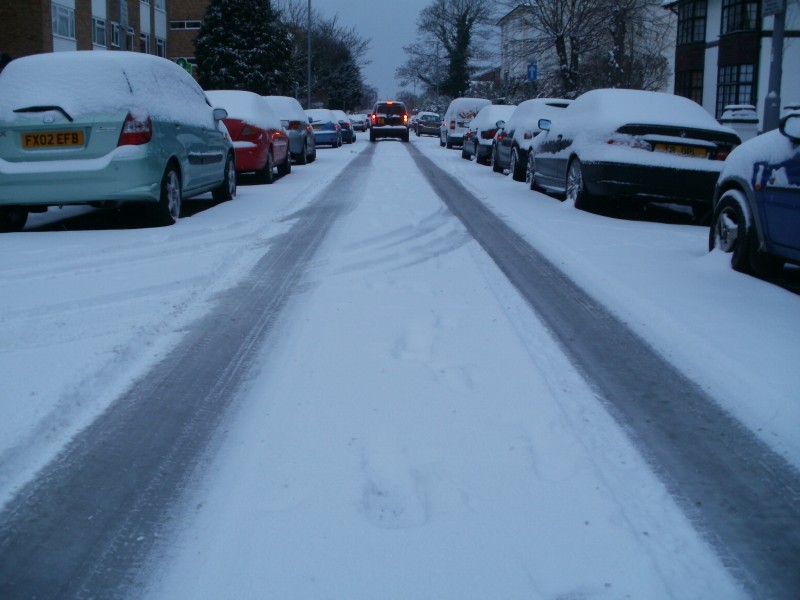Our Scrappage, Recycling and Car Blog
later post | index | earlier post
Winter driving tips: everything you need to know about driving safely in the colder months
Friday, 10 February 2017

With the recent cold weather, there’s no better time to take a look at your driving technique. Winter inevitably means more tricky driving conditions, from ice and snow to heavy rain - not to mention the fact that it’s dark by half-past four.
Here, then, are 10 great tips for driving in winter, straight from the Institute of Advanced Motorists (IAM) and their chief examiner, Peter Rodgers.
Check your tyres
The first bit of advice on this list isn’t technically a driving technique, but that doesn’t make it any less important. It’s vital to check that you’ve got enough tread on your tyres, in order to guarantee traction on what can be quite slippery roads. The IAM recommends a minimum tread depth of 3mm and they also recommend that you check the air pressure of your tyres every couple of weeks.
Consider winter tyres
If you live in an area where the weather tends to be more extreme - Scotland for example - then specialist winter tyres could be a sensible option. The rubber mix used in manufacturing these tyres stops them from becoming stiff and inflexible, which can happen to standard models once the temperature drops below about 7°C.
Make sure you prepare for journeys
There are a number of things you should check before heading out on a winter trip. You need to make sure your oil levels are sufficient, that your coolant and windscreen washer fluids are of the right concentration, and that you’ve got your route planned out. It’s also important to have a winter safety kit on board if you’re planning a longer journey: this usually consists of a high visibility vest, a shovel, a blanket, an LED torch and a tow rope.
Give your car a once-over before setting out
Take the time to get rid of any snow and ice from the car’s windows, roof and bonnet before you leave: you want your vehicle to be in the best possible condition. It’s one thing to gather snow and ice as you go, but piling it onto snow and ice that’s already there can be avoided.
Consider using a higher gear
One way to help your tyres maintain their traction on winter roads is to pull away in second gear, and to ensure that you keep the gear high and the engine revs low throughout the journey. If you drive an automatic, your car should have a winter operating mode that allows you to do this: look out for a button marked with a ‘W’ symbol.
Choose your speed based on what you can see
You should always ensure that your stopping distance is based on how far ahead you can see; it’s best to be conservative on your estimates. If the roads are covered with snow, you should be looking at increasing your stopping distance by as much as 10 times.
Don’t speed
This goes without saying, but trying to reach your destination too quickly can be fatal in hazardous conditions. Slow down, and give yourself as much time as you need to react to any potential incidents.
If you need to brake, do it in a straight line
This is one of the first things racing drivers learn, and with good reason. Whenever a car turns, centrifugal force will try to pull the vehicle outwards. As a result, suddenly slowing or braking in turn can cause a car to spin. It’s therefore much safer to break in a straight line before making any turn.
Use momentum to deal with hills
Dealing with hills can be tricky in winter, with many drivers finding themselves getting stuck and unable to force their vehicle to the top. As a result, it’s important to ensure you’ve got enough momentum before you start the climb. Needless to say, you should reverse this when going down any hills: start very slowly. The last thing you want is to build up so much speed you can’t control the vehicle.
Keep an eye on the horizon
This final tip is simple, but can be very effective. If you keep your eye on the horizon, you’ll notice much faster if the car is beginning to slide. This means that your instincts are likely to kick in faster, and you’ll find yourself using steering to help correct the slide.
later post | index | earlier post
Categories
- Car Maintenance 26
- Driverless Vehicles 2
- Driving Abroad 4
- Economy 8
- Environment 5
- Insurance 2
- Light-Hearted 1
- Manufacturers 7
- Motoring Guides 6
- Motorways 6
- New Car Sales 6
- Safety 11
- Salvage 12
- Social & Community 2
- Used Cars 20
- Winter Driving 3
Recent posts
- How to tax your car (the complete guide)
- Basic Car Maintenance: How to change your spark plugs
- The complete guide to replacing a fuel filter
- How to scrap a car
- How tyre damage can hinder performance
- Thinking about scrapping a car this Christmas?
- Basic car maintenance: Replacing the horn on a car
- Hydrogen Powered Cars in the UK
- How to Change your Engine Oil
- How To Change Rear Lights in a Car
- Can I sell my car without the log book?
- Basic Car Maintenance: How to change your car battery yourself
- The growing interest in eco-friendly cars
- How to change windscreen wiper blades
- The best small cars to buy second-hand